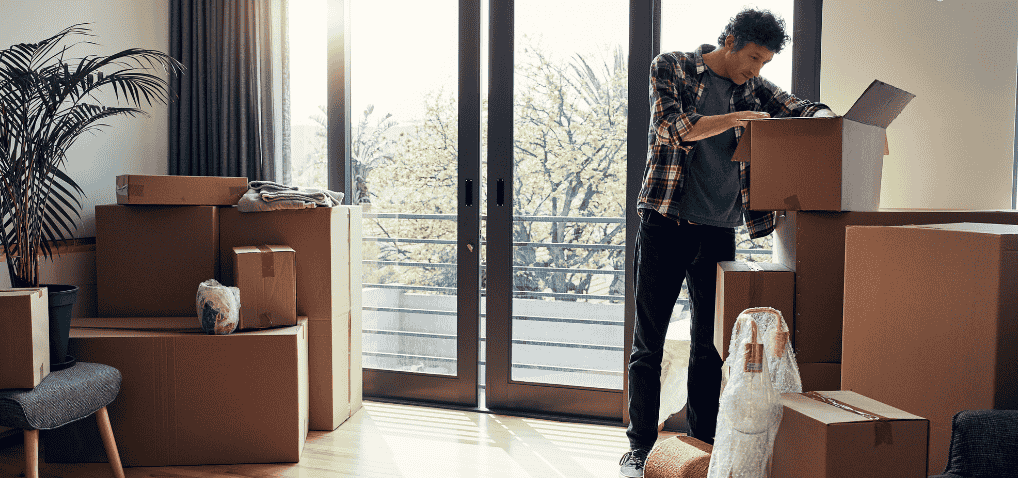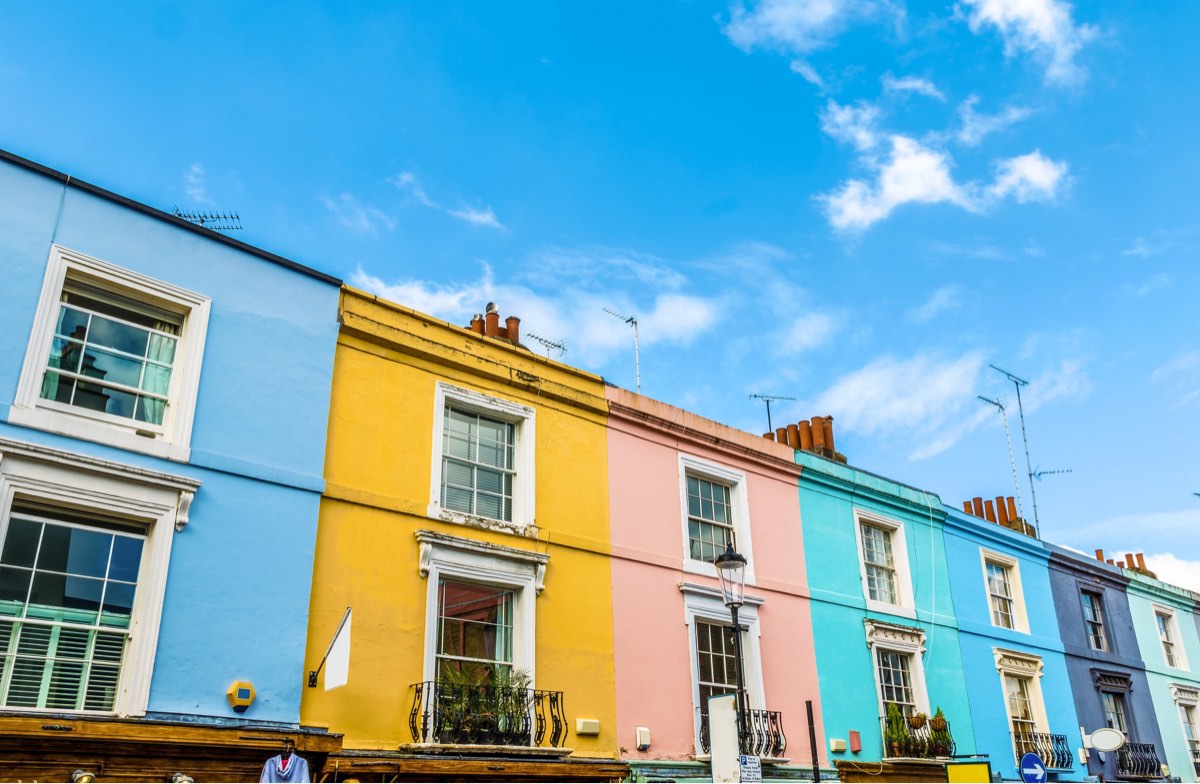When you buy a property, it will generally be either on a freehold or leasehold basis. It’s important to learn the differences whether you're a first-time buyer or existing property owner moving home, so you know exactly what kind of ownership you’ll have when you buy your new property. We’ll help you understand what freehold and leasehold really mean in this guide.
Freehold and leasehold are essentially types of property ownership. The kind you choose will determine whether you pay ground rent, what kind of changes you can make to the property and for how long you’ll own it.
The Topics Covered in this Article Are Listed Below:
- What Does Freehold Mean?
- Types of Freehold
- What Does Leasehold Mean?
- Buying a Leasehold
- What to Know When Buying a Leasehold Property
- Pros and Cons of Leasehold vs Freehold Property
- How Does a Leasehold Work?
- Commonhold Properties
- Difference Between Freehold and Leasehold Mortgages
- Make Sure You Understand the Difference Before Buying a House or Flat for the First Time
- Length of Lease and Extending the Lease
- Charges for Leasehold Properties
- Management Disputes
- Insurance
- Freehold vs Leasehold - Summary and Next Steps
What Does Freehold Mean?

A freehold is the permanent and absolute tenure of land or property. Basically, if you buy a freehold property, it means you own that property and the land on which it stands outright, in perpetuity. It’s completely yours unless you decide to sell it.
Every property will have a freehold, you just might not own it. If you don’t own your freehold, then you’ll have a landlord who does – they’re called the freeholder. The freeholder can be an individual or a company, like a housing association.
As a rule of thumb, houses are typically available as freehold properties while most flats are available as leasehold. However, leasehold houses and freehold flats do exist – we'll talk about these more below.
It’s worth noting that there are slightly different rules and processes for buying the freehold on flats from houses. See below for more information.
TYPES OF FREEHOLD
There are 3 main types of freehold:
- Fee simple absolute - this type of freehold gives the owner complete control indefinitely as long as they keep up with any obligations they have, such as property tax. The owner would also be able to leave it to anyone in their will. This is the most common type of freehold
- Fee simple defeasible - this is a less common type of freehold. It means that the owner can keep ownership as long as they meet certain requirements. For example, the freehold might be limited to certain usage, and if the owner violates these requirements, they could lose the property. There are many different regulations that a freehold could be subject to, so it’s important to check before buying the freehold
- Life estate - this ownership lasts for the duration of the owner’s life, after which it transfers to their heir. The life estate gives the owner the freedom to live in the property and make any changes they want, while allowing it to easily transfer to whoever they want to have it after their death
What Does Leasehold Mean?
A leasehold is the holding of a property by lease. Leasehold ownership is different from renting as you do, technically, own your property, but you only own it for the length of your lease agreement with your freeholder. Unlike a freehold, you don’t own the land on which your property stands. Instead, someone else will own the freehold – the actual land and the building itself – and you pay for the right to live in the property for a selected period, i.e. until the lease ends.
Your lease agreement will determine what you do and don’t own, and what you can and can’t do to the property, e.g. put up a satellite TV dish or move an internal wall. The ownership of the property returns to the landlord when your lease ends.
The majority of flats you can buy are leasehold, but there are some leasehold houses as well.
Within local regulations you can do what you like to a freehold property. If you want to change things about a leasehold, you need to get the freeholder’s permission within the terms of the lease.
BUYING A LEASEHOLD
When you look at buying a leasehold property, you purchase the remaining time that’s on the leasehold. If you buy a leasehold property with 100 years or longer on the lease, you may not need to renew it during your lifetime, but you’ll still have to pay ground rent. If the leasehold is passed on in a bequest, the new leaseholder may have the option to extend the lease depending on criteria and circumstances.
Buying leasehold properties with mortgages can be more difficult than buying a freehold. If there’s a short time remaining on the lease, some lenders might not be willing to offer a home loan. This is because a short leasehold means that there could be the difficult situation of ground rent and leasehold renewal, which could lower the property’s value. You might be able to extend the leasehold before you purchase the house.
Other than this, buying a leasehold property is much the same as buying a freehold property. The deposit amounts and interest rates will often be similar, as will the affordability requirements.
What to Know When Buying a Leasehold Property
Before you decide whether it’s worth buying a leasehold property, there are few things you should understand:
- A leasehold is like a long term rental, but it’s still technically a type of property ownership – make sure you thoroughly understand the lease agreement. It dictates what you can and cannot do with the property and includes all rights and responsibilities. A solicitor can help explain the terms and implications
- When you buy a leasehold, you only own the property for an agreed upon period called the lease term - the lease term is critical and can vary significantly, typically ranging from several decades to 999 years, but it could be shorter
- Resale and lease length go hand in hand - the remaining length of the lease is a crucial factor when it comes time to sell the leasehold property. If the lease has fewer than 80 years remaining, it can be harder to sell and secure a mortgage. Leaseholders typically have the legal right to extend their leases after owning the property for a certain period, but this process can be expensive as it involves both legal and valuation fees, plus the cost of the lease extension itself
- With a leasehold property, it’s likely that you’ll have to pay:
- Ground rent - this is a nominal amount paid to the freeholder or landlord. It's important to understand how much it is, how often it is payable, and whether it increases over time
- Service charge and maintenance - these are fees that leaseholders pay to cover their share of maintaining the building, including common areas like hallways, roofs, and gardens, as well as services like security and communal utilities. These charges can vary year to year and can significantly impact the cost of owning a leasehold property. The service charge also normally includes building insurance
- You may have to obtain permission from the freeholder to make certain changes to the property - sometimes, significant restrictions can be imposed on what leaseholders can do, for example some freeholders won’t allow you to display things on your balcony like large plants, a gazebo or even your washing!
- The freeholder or a management company usually manages the building and is responsible for the majority of repairs - it’s important to assess how well the building is managed, as poor management can affect both the quality of life and the potential resale value of the property
- Sometimes, leaseholders may have an opportunity to buy the freehold – this can be either alone or jointly with other leaseholders. This can provide more control over the costs associated with the property and potentially enhance its value
Pros and Cons of Leasehold vs Freehold Property
When considering the freehold vs leasehold dilemma, it’s a good idea to look at the benefits and drawbacks of each.
Benefits of Freehold
- You don’t have to worry about your lease running out – you own the property
- You can redecorate/renovate/improve your property as you see fit, without necessarily asking permission
- You don’t have to deal with a landlord/freeholder
Drawbacks of Freehold
- It’s your responsibility to maintain the property, its exterior, its facilities and any garden area
Benefits of Leasehold
- You usually have less responsibility when it comes to repairs to the property itself – it’s up to the landlord
- There’s normally the opportunity to buy the property outright – you have the right to buy the freehold on a house if you meet certain qualifying criteria, or you can buy a share of the freehold on flats via collective enfranchisement
- They’re ideal for people requiring short term accommodation
Drawbacks of Leasehold
- You’ll have to approach the landlord for a renewal when your lease expires, which isn’t guaranteed
- You have to pay ground rent
- You might have to pay significant service charges – e.g. for the cleaning of communal areas, upkeep of any garden, general maintenance and building insurance and more
How Does a Leasehold Work?
Leasehold Houses
Leasehold ownership of a house usually includes the interior and exterior of the property. This is different from a flat in which you usually only own the interior. Leasehold ownership of a house often includes some of the land, e.g. a garden or driveway, but not necessarily the whole property.
This usually means you can make some changes to the property, but it’s always best to check the terms of your lease or speak with the freeholder – otherwise you could face penalties if you violate the lease. Lenders will sometimes decline these properties depending on the ongoing costs of the lease, like the service charge and the ground rent.
A lot of leasehold houses are available through shared ownership schemes. These work slightly differently. You purchase a share – or percentage - of the property and pay rent on the remainder that’s still owned by a landlord. You don’t pay any rent to a third party on a normal leasehold property like you would on a shared ownership one. However, you usually have to pay annual ground rent as well as an annual service charge.
Some flats are also available under shared ownership schemes. See our Shared Ownership guide for more information.
Leasehold Flats
Someone will almost always own the leasehold on a flat. Leasehold ownership of a flat relates primarily to the interior of the flat itself, the walls, the ceiling, the floorboards, etc. It doesn’t usually relate to the structure of the property, the exterior or anything outside the flat. Any communal areas and the land on which the flat stands are owned and maintained by the freeholder. The leaseholder pays a communal service charge for the upkeep.
As the leaseholder, you have some rights to the property. You can usually paint the walls and change the carpets in a leasehold, etc. but it’s always best to check the terms of your lease first.
Finding Out Who Owns the Freehold
As a leaseholder, you have the right to know the freeholder’s name and address. You can use the land and property register to find out who owns the freehold on your property.
Buying the Freehold on Your House
You have the legal right to apply to buy the freehold on your house so long as you meet certain criteria. You can approach your landlord at any time to buy the freehold outright, but this doesn’t mean they have to sell.
If you’re the leaseholder of a shared ownership home, you reserve the right to purchase additional shares until you own 100%. Sometimes this coincides with buying the freehold on your house, but the ins and outs will depend on the actual lease.
Buying the Freehold on Your Flat
Buying the freehold is obviously a little more complicated for flats than houses, as your flat will likely be built on the same land and be part of the same building as the other flats in the building complex. Consequently, you can’t be the sole freehold owner unless the freeholder sells the whole complex to just you. If you own a leasehold flat and want to purchase the freehold, you would usually only purchase a share of the freehold in which you’d jointly own the freehold along with the building’s other tenants. This is known as shared freeholders. It’s also sometimes called collective enfranchisement.
Do Freehold Flats Exist?
Freehold flats only really exist in the UK in the form of the share of the freehold, where the owner owns not only the flat but also a share of the land and building.
Commonhold Properties
Commonhold properties are similar to when you own a share of the freehold. In a commonhold, the freehold is owned jointly by the owners of the different flats or units in the building. The commonhold is overseen by a Commonhold Association which is responsible for the upkeep and maintenance of the grounds. If you own part of the commonhold, you will automatically be in the Commonhold Association. This means that you will not have to pay ground rent and there will be no third party managing the property.

Difference Between Freehold and Leasehold Mortgages
Leasehold mortgages can be a little more complex than mortgages for freehold properties, but the products available to you are the same - e.g. you can have fixed, variable and tracker rate mortgages for leasehold or freehold properties. You'll also have access to the same kinds of first-time buyer mortgage rates or moving home mortgage deals whether you're buying a leasehold or freehold. Each lender will have their own stipulation as to what kinds of mortgages they offer but there are many options on the market.
It’s Hard to Find Mortgages for Short Term Leaseholds
You can take out mortgages on both freehold and leasehold properties, but most lenders will only allow you to borrow for leases of 80 years or above. You can sometimes find lenders willing to loan on leases between 70 and 80 years, but it’s unusual to find a lender for anything under that. This is because the cost of extending a lease or buying the freehold greatly increases when the remaining years on the lease drop below 80 years.
Make Sure You Understand the Difference Before Buying a House or Flat for the First Time
If you’re looking at buying your first home, it’s important to make sure that you understand whether the property is leasehold or freehold and the difference between freehold and leasehold, as this will have an impact on what you can do with the property.
While most flats are leasehold properties, you might find some with a share of freehold or commonhold arrangement. This is because multiple units share the same plot of land. You might also find houses that have a leasehold instead of a freehold, though most houses are freehold.
If you’re unsure, you can speak to your mortgage broker or solicitor about what type of property you’re buying and get advice on what it means for you.
LENGTH OF LEASE AND EXTENDING THE LEASE
Leaseholds on flats are usually bought or arranged for 99 years or 125 years at a time, though this can be different in some cases. Leaseholds for houses are often shorter. If the leasehold expires, then the property will revert to the owner of the freehold. This means that it is vital to extend the lease if you have a leasehold property. This can be expensive and time consuming. You can extend your lease by either following the formal route with courts, or by contacting the freeholder directly to negotiate the extension.
CHARGES FOR LEASEHOLD PROPERTIES
When looking at freehold vs leasehold, there are more ongoing charges with a leasehold. The 3 main types of charges you'll have to pay on leasehold properties are the following:
- Ground rent - this is paid to the owner of the freehold to let you use the land. Your contract should show how much the ground rent is, as well as whether or not the freeholder can increase the rent amount that they charge you
- Service charges - this is particularly important for leasehold flats. The service charge will go towards the upkeep of common areas such as cleaning and maintenance. You could also be liable to contribute towards more significant costs, such as the cost of refurbishing common areas
- Administration fees - these are usually fees to do with the buying or selling of the leasehold. Your solicitor or conveyancer should go over the fees with you during the purchase process
MANAGEMENT DISPUTES
If you own a leasehold property and are not happy with how the leasehold is managed, you might be able to dispute this. There are 2 options: you can either apply to the relevant tribunal to get the management changed, or you can take over the management of the leasehold using your Right to Manage. You would need to prove improper management if you want to approach the tribunal. To extend your Right to Manage, you would have to meet certain criteria, but you don’t have to prove that the property is being badly managed.
INSURANCE
For both leasehold and freehold properties, you’ll need to get proper insurance to protect your property. Most lenders make insurance a requirement of getting a mortgage. This is because without buildings insurance, the property could lose its value if there is a disaster such as fire or flood. Insurance providers are generally happy to insure both freehold and leasehold property types with no major differences.
You might also want to consider other types of insurance to protect your home and belongings. The main types of insurance for properties are:
- Building insurance - this covers the actual building itself against issues such as fire, flood, or other disasters. This is the basic insurance that all lenders require if you want to get a mortgage loan
- Contents insurance - this is a type of insurance that many people get regardless of whether they are renting or have bought a property. Contents insurance protects against damage or theft of your personal belongings. Make sure to carefully report what items you have in your house, and keep hold of receipts for high value items as evidence of ownership. This will prove to be extremely important in the event of a claim
- Specialist insurance - if your property is an unusual case, you might also want specialist insurance. For example, if your property is in a high risk area, uses non-standard construction, or is going to be unoccupied for long stretches of time, you might need insurance that covers these situations
- Landlord insurance - if you’re purchasing a buy-to-let property, you might also want landlord insurance to cover yourself and your tenants
- Commercial insurance - if you’re buying a commercial property or a mixed-use property, you may also need some types of commercial insurance or liability insurance, in case a member of the public gets hurt at your property
At John Charcol, we can also help you arrange suitable insurance through our selection of trusted and highly recommended insurance providers.
Freehold vs Leasehold - Summary and Next Steps
When you look at a freehold vs a leasehold in the UK, the main difference is who owns the land the property is built on. If you buy a freehold, you buy the land, whereas with a leasehold you only rent the land.
This means that you have to pay additional charges such as ground rent and service charges. For a freehold property, you would be responsible for managing the upkeep of the area yourself.
Flats typically have a leasehold, while most house types are freehold. You could also have a commonhold property where you and the other units in a building share ownership of the freehold.
A lease on a leasehold property is usually at least 50 years but often more. When you approach the end of your lease, you’ll have to negotiate a new leasehold agreement. This is usually simple, but it can take time. It’s harder to get a mortgage on a leasehold if the lease only has a limited number of years left. Most lenders prefer leasehold properties to have at least 60 years left on the lease.
Still Not Sure?
It’s not always as straightforward as freehold vs leasehold - what suits you ultimately depends on your unique situation. Our advisers can explain your options to you in a lot more detail. Call us now on: 0330 433 2927 or get in touch online.
If you already know whether you want a freehold or leasehold property and are keen to start your house-hunting journey, read our House Buying Guide for tips.
Get in touch with our experts

0330 433 2927



